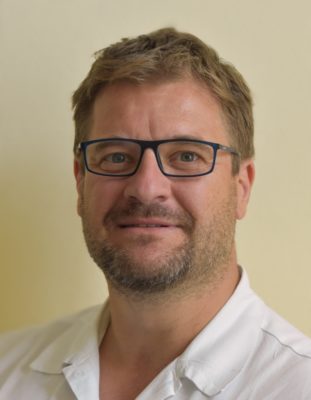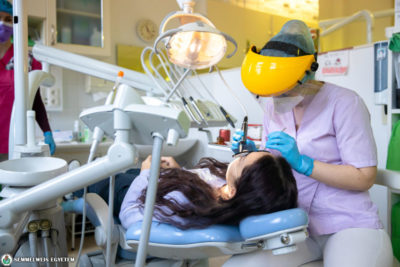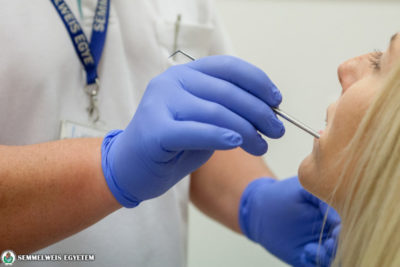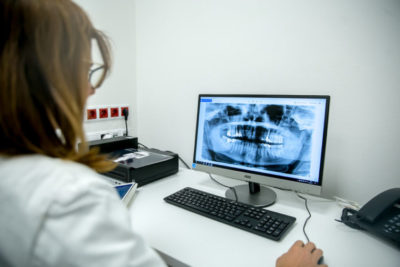Every year, two out of a thousand newborns are born with musculoskeletal diseases due to some sort of a brain injury occurring during delivery. In their case, musculoskeletal rehabilitation plays a very important role in the course of their life later on. Finding the right therapeutic opportunities lies in making an accurate diagnosis, let it be a subsequent deformity surgery or Botox for resolving convulsive conditions. Three out of the 21 presentations of Semmelweis Health Days organized on 29 April will focus on the care of children with disabilities.
 “In such a situation, we not only heal the child, but the entire family is involved in the care, and it does not alleviate the situation that talking about children with disabilities is still considered to be a taboo in Hungary”, said Dr. Tamás Terebessy, associate professor at the Department of Orthopaedics at Semmelweis University.
“In such a situation, we not only heal the child, but the entire family is involved in the care, and it does not alleviate the situation that talking about children with disabilities is still considered to be a taboo in Hungary”, said Dr. Tamás Terebessy, associate professor at the Department of Orthopaedics at Semmelweis University.
As the orthopedic surgeon explained, if it is suspected in the case of a newborn that hypoxia may have occurred during delivery or the baby has had a stroke that affects the development of the nervous system, it is almost impossible to recognize the consequent abnormalities at a very young age. If the baby has recovered from the trauma on the brain, the tests taken at the age of 1.5 show little difference, because the real residual symptoms (the signs that can already be seen by the parents) develop at the age of 1.5-2 years.
The specialist medical examination system may determine the child’s condition starting from the age of about 4 and may judge in what direction and to what extent the child concerned may be developed after preparing a personalized condition assessment and development plans. According to the specialist, neither underdevelopment nor overdevelopment is good, each child should be treated according to their own condition, which is the task of teams involving a neurologist, a physician for the rehabilitation process, an orthopedic surgeon, a physiotherapist and movement development educators.
“A young child learns to walk by the age of 1 on average, and the development of gait lasts until the age of 7. If the ability to walk has not developed so far, it is very unlikely to happen above this age, even if we operate the child, since the injury is not in the musculoskeletal system, but in the nervous system”, Dr. Tamás Terebessy pointed out.
“In the case of the so-called neuromuscular disease, the bone abnormalities are only secondary, this must be eliminated by prevention or surgical correction. At the same time, with well-defined development and surgical interventions, success may be achieved: for example, enabling the child to replace a toe walking with a walking on foot or a hunched gait with a straight gait”, the orthopedic surgeon said.
In addition to surgeries, Botox may bring spectacular results in resolving convulsive conditions. The average person immediately thinks of cosmetic interventions when hearing about Botox injections, but the drug may also be effective in other areas, such as orthopedic care, based on its mechanism of action.
“Botox eliminates the crow’s feet by paralyzing the muscle that tightens the wrinkle, as a result of which the fold is smoothed out. Both the nervous system having an oxygen deficiency, and the muscles are in a spasm, which means that they overwork. If these are partially weakened with the help of Botox, then the spasm relieves, but in the meantime the muscle function remains”, Dr. Tamás Terebessy explained.
Currently, this procedure is only partially supported by social security, only for the treatment of the calf muscle, otherwise it can only be applied with an individual permission.
At Semmelweis University’s Department of Orthopaedics, 100-200 surgeries and 20-30 Botox are performed annually on children with disabilities.
Participation in the presentations of Semmelweis Health Days organized on 29 April is free, but a pre-registration is required. Registration closes at 12:00 noon on 28 April.
Orsolya Dávid
Photo: Attila Kovács – Semmelweis University (cover photo: illustration)
Translation: Katalin Illés-Romhányi


